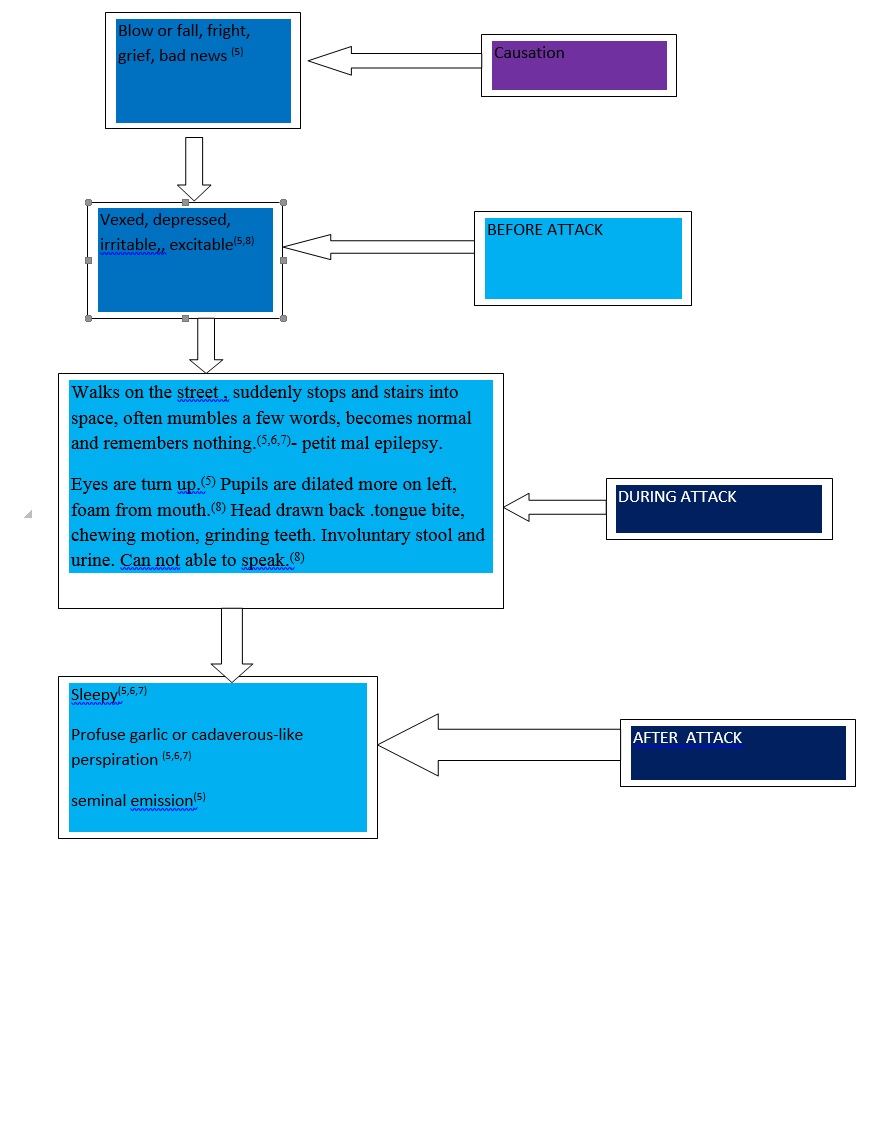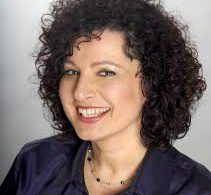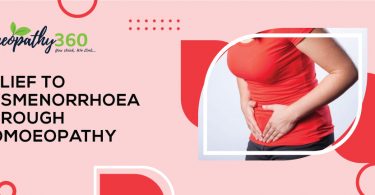
Abstract- Compositae family is one of the biggest family in homoeopathic world . It contains around 60 medicines of homoeopathic materia medica. Compositae is basically known as family of injury or trauma weather the trauma is mental or physical . some medicine in this family useful for convulsions which is reactivity of person to any mental or physical trauma. One of them is Artemisia vulgaris, a lesser known medicine of compositae family. Its sharing many striking characteristic and clinical symptoms which can be useful in clinical practice for finding simillimum and having good results in cases of epilepsy, somnambulism , hysteria and worms . Its main seat of action is central nervous system. Injury, emotional disturbances and menstruation are main causes for bringing up the complains.
Key words- Compositae family, medicine, injury, Artemisia vulgaris, convulsion, hysteria, epilepsy, fright , grief, bad news, blow on head.
Introduction-Compositae, Asteraceae family is second largest of flowering plants bearing approximately 1,528 genera and 22,750 species worldwide. Uniqueness of family is to be a single flower composite of many florets.(1) Artemisia vulgaris is one of the member of the compositae family. It is commonly named as mugwort or wormwood.(2,3) It is commonly used to flavor the food. It is also having medicinal property. It is thought to used as energy booster, for calm the nerves, support the digestion and promote regular period. Pharmacologically it is having antioxidant, hypolipaemic, antispasmolytic , bronchodilatory , estrogenic and antifungal and antibacterial property. It is a popular drug in Greek and Roman much indicated in epilepsy in children. It has been used by allopathic physicians as a medicine before it was used homeopathically. (4)
- Common medicines belonging to compositae include: (1)
–Artemesia vulgaris
-Arnica montana
-Bellis perennis
-Eupatorium perfoliatum
-Erigeron canadensis
-Taraxacum officinale
-Cina
-Chamomilla
-Abrotanum (1)
- Commonly all the members of compositae family are divided in to basically 4 groups in homoeopathy.(1)
1.Injury
2.Convulsive
3.Git and gut medicine
4.Fever group ( 1)
In convulsive group, there isextreme irritability , touchiness and ill humour , while injury group shows extreme fear and fright .(1)
Artemisia vulgaris, because of its prominent convulsive symptoms, is included in convulsive group.(5)
Artemisia vulgaris produces the following symptoms.
Clinically it can be used for-
Epilepsy, worms, convulsion, hysteria, somnambulism, hydrocephalus.(5)
- Pathogenesis-
It produces great congestion of cerebro-spinal vessels of meninges and produces extreme hyperaemia of medulla, spine and meninges.(4)
- Causation-
Complaints can be brought on by blow on head , fright or grief, bad news (5)
- Convulsion/epilepsy-
It is having prominent place in convulsion(5). It is best suited to child and girls in the puberty age group. It is useful for injury to the eyes as an internal or external medicine. The patient is irritable and excitable before an attack of epilepsy(6). It is useful for epilepsy without aura(5,6) Epilepsy can initiate after fright and grief like emotions. Epilepsy can be start after blow or injury to the head.(5,6) Epilepsy can be associate with menstrual disturbances.(5) Epilepsy associated with teething . Catalepsy induced by bodily exertion or by alluding to the disease. Epileptic spasm also found while cooling when overheated and from dancing(8).
Before epilepsy, the person becomes very much vexed, irritable and depressed during day before an attack at night.(5,8) There is excitability all day before an attack at night.( 8)
In chorea, there is inability to swallow. Right sided convulsion, left sided paralysis.(5) Attack of epilepsy is frequently repeated , then followed by long interval of rest. (5)
It is useful in petit mal epilepsy. Walks on the street , suddenly stops and stairs into space, often mumbles a few words, becomes normal and remembers nothing.(5,6,7))
There is sharp, shooting pain in the head draws back with spasmodic twitching . head bend backward and sideward during attack.(8)
Eyes are turns up before attack.(5) Piercing shrieks and eyes are turned with violent clonic spasms of all limbs.(8)Left pupil dilated more than right.(8) . Twitching of face and mouth on left side . Face looks older.(8) Lower joy pressed forward. Chewing motion of gums and grinding of teeth .Bites the tongue during spasm.(6) Froth from the mouth during spasm. Speech is unintelligent during attack(5). Can utter the single word with great difficulty.(8) Swallowing is difficult, food is escapes from the mouth. Passes feces and urine with spasm.(5)
Long and deep sleep after spasm .After epileptic attack, there is profuse sweat which is having garlic odour(5,6,7). After epilepsy there can be seminal emission.(5) Cannot hold head up after spasms.(6)
It is also useful in hydrocephalus in second stage, when symptoms agree. (8)
- Mind and sensorium-
It is useful for somnambulism, the person gets up at night and work but cannot remember anything.(5,6,8) There is tendency to steal the things in boys with epilepsy(8). Coloured light, for example, coming through colored glass make him dizzy.(8) Letters runs together while studying or writing. (8)
- Female genital organs-
Violent cramps in abdomen with irregular or insufficient menstruation. irregular menstruation with convulsion .it is useful in Prolepses of uterus. It is useful for violent contractions of pregnant uterus with threatened miscarriage. There is checked lochia. (5)
After reviewing the materia medica, it was observed that it is sharing similarity in the symptoms find in the drug of other medicine of compositae family. Here, one finds that the convulsion starts after injury to head . which is common causation find in Arnica montana, Calendula officinalis. Bellis perrennis which is having complain after and due to injury.(2,,3) Convulsion may be brought on by Grief ,Bad news , fright . This emotions generates Mental trauma or Mental injury to the person felling of being insulted or hurt like the member of the same family.(2,3) Convulsions are also very common in Cina , Chamomilla and Abrotanum. By nature person is irritable and vexed which is also found in Cina and Chamomilla very commonly. (2,3)
This all similarity is suggesting that this medicine is having many common features of compositae and covering essence or theme of compositae family, which is being injured hurt shocked (by injury or trauma). (2,3)
Artemesia vulgaris the member of compositae family is a very serviceable remedy in epilepsy , when the attack have been brought on by violent emotions and especially by fright, when the attacks come in closely repeated seizures , that is to say , when there are several convulsions coming close together, and then a long interval of rest . the paroxysms are usually followed by sleep .(6) Again Artemisia vulgaris seems to be of some use in “petit mal” epilepsy. “The patient is walking in the street , when suddenly , he stops stares in to vacancy , mumbles a few words possibly, regains a normal condition , and then goes his way totally unconscious of anything unusual having elapsed.”(6)
| Blow or fall, fright, grief, bad news (5) |
| Causation |
| Vexed, depressed, irritable,, excitable(5,8) |
| BEFORE ATTACK |
| Walks on the street , suddenly stops and stairs into space, often mumbles a few words, becomes normal and remembers nothing.(5,6,7)– petit mal epilepsy. Eyes are turn up.(5) Pupils are dilated more on left, foam from mouth.(8) Head drawn back .tongue bite, chewing motion, grinding teeth. Involuntary stool and urine. Can not able to speak.(8) aaa . |
| DURING ATTACK |
| Sleepy(5,6,7) Profuse garlic or cadaverous-like perspiration (5,6,7) seminal emission(5) |
| AFTER ATTACK |

Conclusion
Artemisia vulgaris prove to be useful in cases of epilepsy in children and girls of puberty age group. It is also very useful in petit mal epilepsy which is the most common type of epilepsy found in children .Convulsion or epilepsy can be associated with emotional disturbances . The medicine possesses many characteristic striking features for epilepsy, convulsion and hysteria. So this subject needs more research as well as proving of the medicine further to confirm the utility of Artemisia vulgaris in homoeopathic clinical practise.
References-
1. Patil J.D.. Group Study in Homoeopathic Materia Medica, B.Jain Publication, December 2006, pg-71
2. Sankaran Rajan. An insight in to plant, volume 1, Homoeopathic Medical Publication, January and August 2007, pg-145
3. Sankaran Rajan. An insight in to plant, volume 3, Homoeopathic Medical Publication, January and August 2007,pg-1117
4. Ekiert H, Pajor J, Klin P, Rzepiela A, Siesak H, Szopa A,
Significance of Artemisia Vulgaris L. (Common Mugwort) in the History of Medicine and Its Possible Contemporary Applications Substantiated by Phytochemical and Pharmacological Studies, Molecules, 2020 octomber ,volume 25, issue 19,
5. Clarke JH, A Dictionary of Practical Materia Medica,volume 1, Indian Books and periodical publishers, reprint 2002,pg-195
6. Boericke W, Pocket Manual of Homoeopathic Materia Medica and Repertory, B.Jain Publication, year 2004, pg- 86
7.Phatak.S.R., Materia Medica of Homoeoapthic Medicine, B.Jain Publication, 1993, pg-76
8. Hering C., Guiding symptoms of our Materia Medica,volume 2 , b.jain publication, year1997, pg-154
9. Farrington.E.A., Clinical Materia Medica , 4th edition, B.Jain Publication, yea 1996,pg-242
About the author–
Dr Vani Jatinbhai Oza –
Ph.d (scholar), MD, BHMS
Associate Professor –Department of Materia Medica PG –Rajkot Homoeopathic Medical college , Parul University , Rajkot





